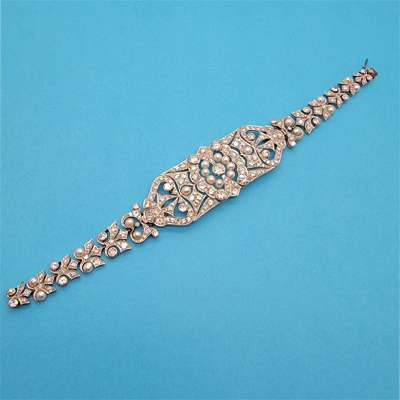
Photo credit: Fletcher Blackburn
Introduction to the Edwardian Jewelry Period
The Edwardian period technically starts and ends during the years that King Edward VII sat on the throne in England from 1901 to 1910. However, some scholars will say the period started in 1863, when Edward, who was Prince of Wales at the time, married Danish princess Alexandra.
Marked by a distinctive elegance and sophistication, this era witnessed a shift in societal norms and fashion, reflecting a move towards lighter, more graceful forms in jewelry. This period also highlights a significant transitional phase in British history, embodying the optimism and luxurious lifestyle that preceded World War I.
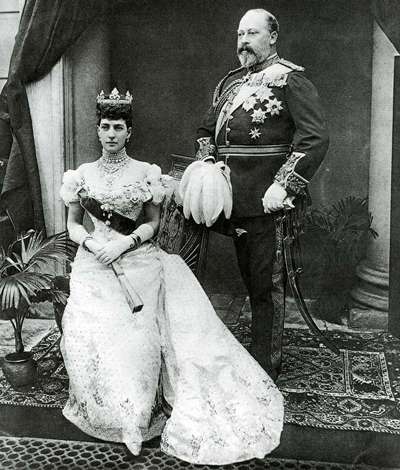
Photo credit: Dreamstime
Royal Influence and Societal Trends
Because Queen Victoria was in mourning from the death of her beloved husband Prince Albert in 1861, Royal societal duties were passed down to Prince Edward and his beautiful new bride.
Prince Edward and Alexandra took on the job of societal leaders with fervor, entertaining guests and managing royal functions at Marlborough house. The pair were the trend setters of the day and one could be assured that any new style or fashion they introduced at their lavish parties, masquerade balls and dinners would be the next hot thing worn by the who’s who of European and American elite.
Their influence extended beyond mere fashion, shaping the social etiquette and cultural norms of the era, making their mark on everything from art and music to the very structure of social gatherings.
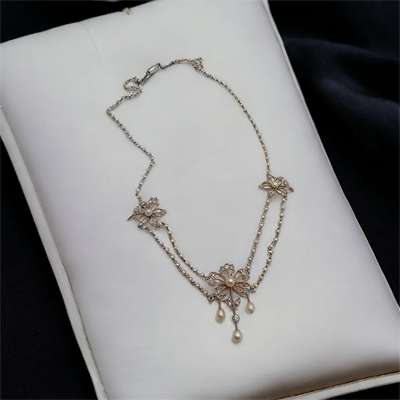
Photo credit: Fletcher Blackburn
Edwardian Jewelry Characteristics
Edward and Alexandra had a very firm adhesion to royal tradition while at the same time exhibiting a flair for avant-garde fashion and trends.
Unlike the Art Nouveau style, which overlapped the Edwardian period (1895 to 1910) and was thought by the royal couple to be too exaggerated, risqué and downright vulgar at times, with it’s naked bodies and mystical sensuality, Edwardian jewelry was rooted in more traditional design.
The young royals pushed the boundaries of fashion while still holding the core elements of tradition. For example, Alexandra loved the bows, tassels and garland jewelry of the 17th centuries, but her commissioned pieces boasted bright purples and blues (her favorite color), in platinum and encrusted with diamonds, then hand-milgrained with beaded edges to provide a softer, lighter look.
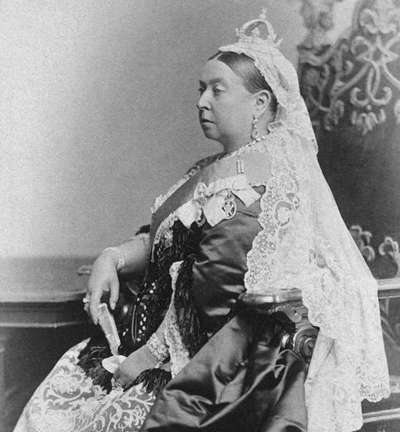
Photo credit: Dreamstime
Innovations in Materials and Techniques
Platinum had been a popular metal for showcasing the brilliance of diamonds due to it’s bright, white tone. Also, platinum didn’t tarnish like the silver-topped jewelry that was normally used. The problem with platinum was it was difficult to melt with the torches of the earlier periods. However, with the advent of the oxyacetylene torch, very high temperatures could be reached, making platinum the metal of choice for the high-end luxury jewelry of the day.
This allowed jewelers to explore more intricate and ambitious designs than ever before. The ability to work platinum into finer, more elaborate patterns meant that Edwardian jewelry often featured lace-like, detailed filigree that complemented the lightweight, airy fashion of the period.
Jewelers also began to experiment with combining different gemstones in more varied and colorful arrangements, enhancing the visual impact of each piece. This period of innovation significantly influenced the artistry and techniques in jewelry making, setting new standards in the craftsmanship and aesthetic appeal of fine jewelry.
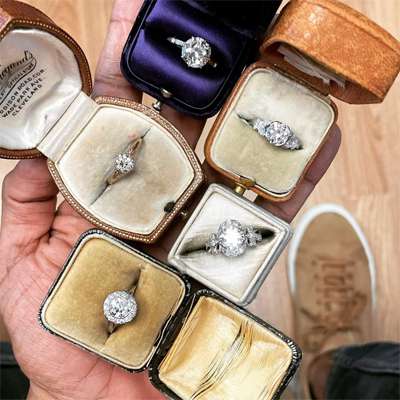
Photo credit: Verma Estate Jewelry
Edwardian Engagement Rings
Edwardian engagement rings are celebrated for their intricate designs and luxurious use of materials, embodying the elegance and sophistication of the era. These Edwardian rings often featured detailed, delicate settings that showcased the era’s preference for artistry in jewelry design.
With a focus on brilliant light reflection, diamonds were typically cut to maximize their sparkle within elaborate filigree work in platinum. This blend of strength and exquisite beauty in Edwardian rings provides a timeless glimpse into a period where craftsmanship in jewelry reached new artistic heights.
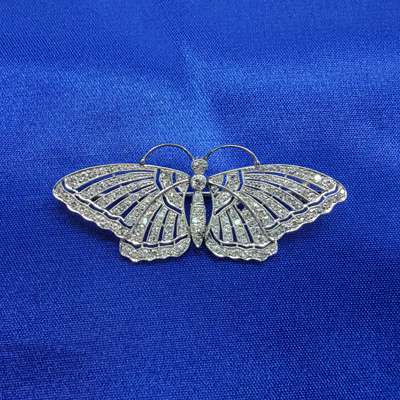
Photo credit: Fletcher Blackburn
Popular Jewelry Styles and Pieces
With platinum, jewelers could make lacier, curvier designs because platinum, while being a dense metal, was malleable and could be pierce sawed to create delicate, flowing designs.
Thin, lacey silk dresses were popular at the time, so it was important to keep the jewelry light and thin to lay right on the delicate fabrics.
Cartier was one of the earliest jewelry makers to adopt platinum as their go-to metal. Many of Cartier’s creations from the Edwardian era have become highly collectible pieces, often selling at auction for incredibly high prices.
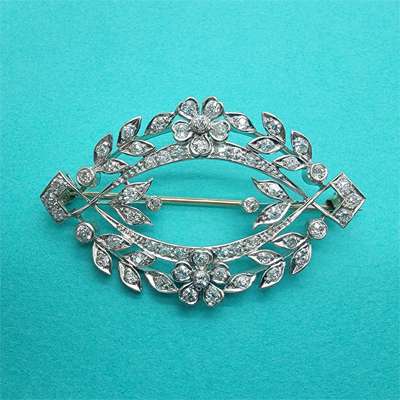
Photo credit: Fletcher Blackburn
The Influence of Gemstone Cuts and Novelty Jewels
Asscher cut diamonds became popular during the Edwardian period and were often set in delicate, open-work filigree rings in platinum, encrusted with diamonds.
Smaller rings were often stacked while large rings were made to extend all the way from one knuckle to the next and set with three stones set vertically, also pierce sawed filigree and milgrain decorating the platinum.
Choker necklaces often used black ribbon or velvet attached to a platinum buckle set with diamonds in lacey garland, bow, or tassel designs.
The most popular materials used in Edwardian jewelry was diamonds and pearls. However, the Edwardians were fascinated with novelty jewels. often displaying butterfly wings, flower petals, feathers, birds, along with exotic colored stones like opal, Alexandrite and Moonstone as well as the more standard stones such as sapphire, ruby and emeralds.
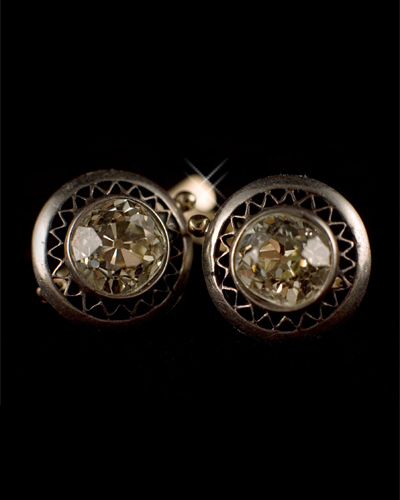
The End of an Era
When World War I started the lavish, champagne and diamond fueled parties dwindled and the Edwardian era of jewelry would be gone forever, leaving us with only memories of a bygone era in jewelry that left many beautiful pieces in safe deposit boxes and safes, only to resurface many years later as reminders of an age of glamor and incredible quality of fine jewelry workmanship.
The war ushered in new priorities and aesthetics, dramatically shifting the focus from opulence to practicality, marking a definitive end to the extravagant and delicate designs that had defined Edwardian jewelry.
The new aesthetics, heavily influenced by the war’s advancements in engineering and architecture, would introduce the era known as Art Deco Era.
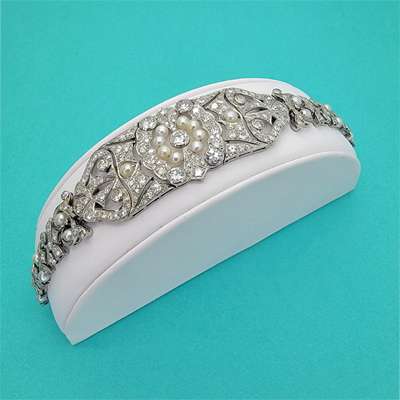
Selling Edwardian Jewelry
Are you considering selling a vintage jewelry? Just fill out the form below and a senior jewelry buyer will contact you with a verbal quote. If you are satisfied with the estimate, we’ll make an appointment for an in-personal appraisal of your vintage jewelry and immediate cash offer.
Call: 310-499-4535
Text: 310-896-8623
GET A FREE QUOTEGet a Free Quote
Los Angeles Jewelry Buyer simplifies the process of selling vintage jewelry in Los Angeles for several compelling reasons:
- Local Convenience: Avoid the hassle of shipping. Complete your sale directly and immediately with us.
- See Every Step of the Evaluation: We prioritize transparency, conducting all assessments in your presence, ensuring your jewelry is always within sight.
- Expertise You Can Trust: Our evaluator is GIA (Gemological Institute of America) trained and certified, assuring you of their expertise in the diamond industry.
- Guidance Without Pressure: If your antique jewelry isn’t a fit for us, we’ll guide you to the best selling options and recommend other buyers. There’s no obligation to sell to us.
- Free Verbal Appraisals: We don’t charge for verbal appraisals. Our goal is to assist you in selling your vintage jewelry while gaining your trust and business.
Interested in learning more about why we’re your top choice for vintage jewelry in Los Angeles? Click on this link to discover additional reasons that make us the premier destination for selling vintage jewelry: The Best Place to Sell Vintage Jewelry.